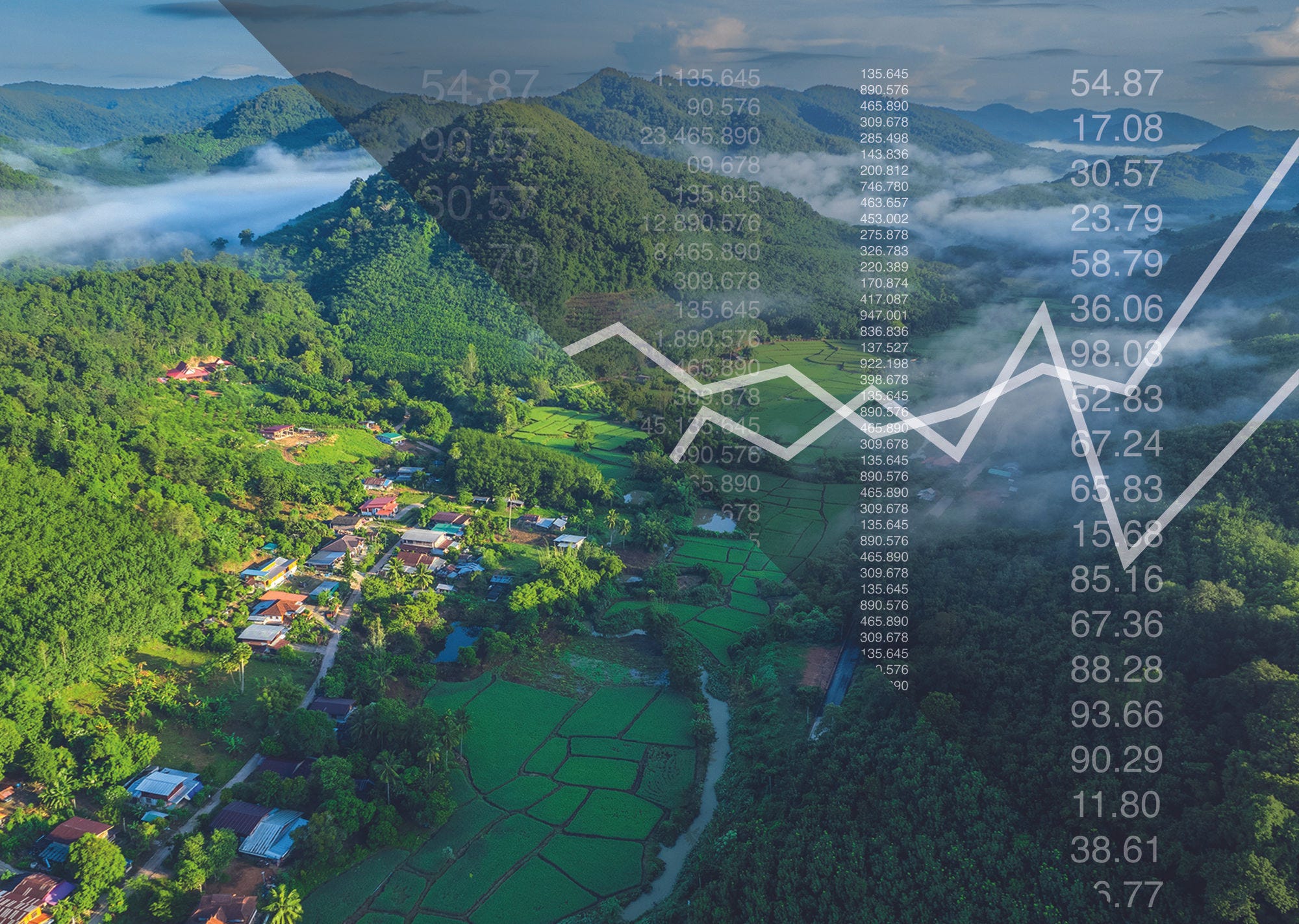Thailand has adopted ambitious clean energy targets to meet its long-term climate goals, committing to reach carbon neutrality by 2050 and net zero greenhouse gas (GHG) emissions by 2065. Transforming Thailand’s energy system is critical to meet Thailand’s climate goals, as the energy sector accounted for 69% of Thailand’s total GHG emissions in 2018, as well as broader development objectives, including access to affordable energy and job creation. To achieve its climate goals, Thailand’s Long-Term Low Emissions Development Strategy (LT-LEDS) includes a target to reach 50% of new power generation capacity from renewables by 2050. Thailand’s LT-LEDS estimates that the share of renewable electricity will be 68% of total electricity generation by 2040 and 74% by 2050. The country’s share of renewable energy was about 13% of total generation in 2022.
Thailand’s clean energy targets as well as broader development objectives will require a rapid acceleration of finance and investment in renewable power and energy efficiency. It is estimated that the investment needs in new renewable power during 2022 - 2037 will amount to Thai Baht (THB) 779 billion (USD 22 billion), whereas investment needs in energy efficiency improvements in industrial, commercial, residential and agricultural sectors are predicted to reach THB 974 billion (USD 28 billion), over the same period.
This Clean Energy Finance and Investment Roadmap of Thailand (“the Roadmap”) outlines critical actions that the Government of Thailand could consider to unlock finance and investment in two clean energy sectors: (i) renewable power, with a special attention to small-scale renewable power systems; and (ii) energy efficiency in buildings, with a focus on cooling applications. The two sectors were selected in close consultation with the Department of Alternative Energy Development and Efficiency (DEDE) of the Ministry of Energy of Thailand.
While Thailand has made important strides to deploy large-scale renewable power capacity over the past decade, significant progress remains needed to unlock financing for small-scale renewable power systems. Deployment of small-scale renewables systems can increase energy security, deliver energy cost savings, provide green jobs for local businesses and improve access to clean power in underserved rural communities and off-grid islands. Limited policy support and the lack of availability of innovative financing models and instruments for small-scall renewable systems have hampered their development. Key recommendations to scale up finance and investment for small-scale renewable power in Thailand include:1
Strengthening policy planning, increasing policy predictability and setting region-specific targets on small-scale renewable power over the near- and long-term, in line with Thailand’s net-zero target.
Simplifying renewables licensing and permitting processes, and requirements for small power producers.
Reviewing and strengthening existing public financial incentives to prioritise the acceleration of small-scale and community-based renewable power models.
Piloting a green credit guarantee scheme for small-scale renewable power projects, for example of small- and medium-sized energy service companies (ESCOs).
Providing financial support to Pay-As-You-Go models to expand off-grid, community-based renewable energy.
Mobilising finance and investment in energy efficiency (EE) is another key priority for Thailand to achieve its climate targets. Thailand made progress towards reducing its energy intensity in the past two decades. However, further efforts are needed to reach Thailand’s 30% energy intensity reduction target by 2037 (compared to 2010 levels), under its draft Energy Efficiency Plan (EEP).
Unlocking financing for EE in public and commercial buildings, including in cooling appliances, is a priority for Thailand. The building sector represented on average approximately 25% of the total electricity consumed in Thailand in 2019. Improving the EE of cooling applications of Thailand’s building stock is a critical priority, as cooling made up for over half of the Thai commercial building sector’s electricity consumption and 20% of its GHG emissions.
The Government of Thailand is committed to accelerate finance and investment in EE projects in the Thai building sector. Thailand is one of the leading EE markets in Southeast Asia thanks to the early introduction and public support for financing schemes such as the Thai Energy Efficiency Revolving Fund (EERF), and is also a hub for cooling technology manufacturing. Thailand has a vibrant and fast-growing private ESCO market, although it is still nascent and requires further support to achieve greater scale. ESCOs still face severe barriers in accessing affordable financing for EE projects, which are often perceived as too risky by commercial banks. Key priorities to accelerate financing for EE of buildings and cooling applications in Thailand include:2
Enhancing building codes and minimum energy performance standards for buildings and cooling applications.
Conducting ex-post evaluations of the EERF and the ESCO Fund and using the evaluation’s findings to support decision-making on the need for financial incentives to promote the ESCO market, specifically for EE projects in the building sector.
Establishing a bulk procurement model for energy-efficient cooling appliances and piloting an energy saving insurance model.
Developing an Energy Efficient Technology List and collaborating with financial institutions to provide financial incentives to the listed technologies.
Strengthening the policy framework for district cooling.
For both clean energy sectors analysed in the Roadmap, enhancing cross-government collaboration and co-ordination emerges a as key priority to streamline policy planning and implementation. Furthermore, increasing capacity building, fostering data collection and awareness-raising, with support of international development partners, are indispensable to ensure that the workforce is well-trained and local communities are informed about the benefits and opportunities of the clean energy transition as well as latest products available in the market.
